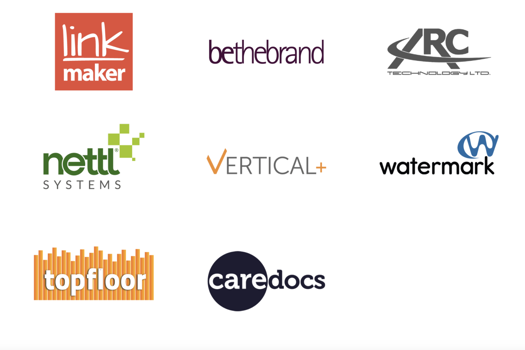To the outsider, it used to look like a black art: scribblings on the back of cigarette packets, tight, illegible handwriting in day books, prices plucked seemingly from nowhere and the minutiae of a job stored only in the deep recesses of the print boss’s brain.
But then MIS came and demystified the process, displaying that business minutiae in charts, tables and graphs for all to understand, and breaking down quotes to the smallest quantum of cost. Computers took over – and not just in the estimating department, every facet of a print business could be broken down into binary code and calculated with cold, electronic precision. Massive benefits were accrued as a result; so much so that it is now commonly held that for all but the very smallest print businesses, an MIS is an essential business tool.
And for those companies one rung above the very smallest, those with between five and 20 employees, an MIS used to be seen as an expensive and unnecessary investment. But then the recession hit.
Suddenly, survival was dependent on how well you understood your business and how quickly you could turn a quote around. Cigarette-packet scribblings just weren’t cutting the mustard anymore. As a result, the demand from small print firms for low-cost, entry-level MIS packages skyrocketed and the number of such options commercially available grew to match this demand. And over the past 12 months, small printers have been buying up these systems like never before – and reaping the benefits.
The idea that everyone in the UK print industry would be using MIS by now always looked somewhat ambitious, and so it comes as little surprise that those in the ‘small printer’ bracket have been slower on the uptake than their larger peers. Sophisticated MIS programs can take weeks to implement and small printers just don’t have either the time or manpower to allow for that. Neither do they generally have the funds to finance full-blown integrated software.
It’s also true that printers in this bracket tend to prefer spending time in the pressroom to sitting in front of a computer. David Lewis, managing director at 10-staff trade printer Daru Graphic in Egham was a prime example. He used to be as old-school as they came when it came to business management.
"My father taught me to quote, literally, on the back of a fag packet," he explains. "Five years ago I was still keeping a day book and a ledger. I come from a background of not feeling comfortable sitting in front of a computer."
That said, he got into MIS around 2006 using a hand-me-down version of Tharstern software, which led him to invest in Tharstern’s SmallPrint module a year or two later. He started with just the estimating module, but things grew steadily, the major catalyst being how the business performed during the recession as a direct result of having MIS at his disposal.
"Through the worst of the recession, the figures I was able to drill out of the MIS were hugely important," he explains. "If I hadn’t had something of this nature, I wouldn’t have been able to make the business grow. It has helped us get through the recession by making sensible and informed decisions that could not have been made without it."
Full utilisation
Lewis is not alone in coming late to realising the benefits MIS can bring. Colorscan, an 11-staff digital web printer, was still doing most of its business processes manually right up until the end of last year. Although it had a TimeHarvest MIS, it was only really using it for bits of estimating and as a contacts list. This changed when sales director David Renouf joined the company in October last year.
"I could see that the lack of a fully utilised MIS was a major gap in Colorscan’s development," he explains. "Since implementation, there are no more little pieces of paper floating around the business that could get lost or be misunderstood. It has also enabled us to keep a much better eye on our business."
The experience of Colorscan and Daru Graphic are not anomalies, the recession forced all businesses to find cost savings, and many found that an MIS aided this process. According to the major MIS providers, this led to a real growth in smaller printers looking at MIS options. It’s a trend that also contributed to EFI’s decision to launch an entry-level version of its Radius MIS software last month.
"Up until now, the smaller-scale printers, which are mainly digital operations, have largely been able to wing it without an MIS," explains TimeHarvest director Geoff Stephens. "They have now come to the realisation that it is becoming less and less likely that they can stay in business without an MIS as they just cannot compete with the sort of margins and speed needed."
By speed, Stephens is referring to how quickly a company can issue a quote. With the growth of e-commerce, putting print businesses into a market where the consumer expects results instantly, spending a few days mulling over the numbers before getting a quote out is no longer viable.
"The speed you can return a quote directly relates to the conversion of that quote into a commissioned job," explains Paul Deane, joint managing director at Shuttleworth. "24 hours is simply not quick enough in the current market. A maximum turnaround is four hours."
When it comes to digital quotes, Stephens believes turnaround times are even tighter. He explains that, if a quote isn’t in a client’s in-tray within half-an-hour, there is no point sending one at all. Tharstern marketing manager Ross Edwards says one of the main reasons printers have been looking at SmallPrint more is the benefits it brings to the speed of quotation.
While Colorscan’s Renouf admits speed of quoting is a major factor, he stresses that there have been wider, and perhaps more beneficial benefits.
"I think the reports are as crucial as the speed of quoting as it can give you real-time information about your business," he explains. "Without an MIS you’d be waiting until the month end for information, but here you can get access in real time to your figures and costs and so react to information straightaway."
Lewis agrees. He explains that having an MIS means you have much better control over your costs as you can see every element clearly. This, he says, enables a business to make more considered, and more accurate, choices about where to save costs – something that was crucial during the recession.
"The past year has seen smaller businesses really gravitate towards adopting MIS systems because it is so crucial to have data quickly and to have figures to hand, knowing what your production costs are," he says. "The way an MIS builds a quote, you can look back and see spend on ink, spend on labour, spend on paper, see margins – it gives you the power to make proper decisions about where you can cut."
Where to cut is also an important decision when you are looking at MIS. There are systems that are so extensive they’d probably walk your dog for you, but you’ll pay a premium for that service. If you simply go and buy the top of the range, you are likely to end up with modules and processes you will never touch.
"Being a digital company, there is an enormous amount in some MIS systems that is completely irrelevant to us, so you do really have to do your research and hone down exactly what it is you need and what you don’t require," advises Renouf.
He explains that Colorscan worked very closely with TimeHarvest to tailor a system that fit. TimeHarvest has two modules, "to keep things simple" according to Stephens, DigiQuote and JobControl. These can be tailored to suit a business and Stephens says they go against the myth that you have to spend a lot of money to have an MIS that takes a job from "cradle to grave" – this product does that job.
Shuttleworth’s Dean adds that not only should a system be tailored to the customer, it also has to be made as easy as possible to use. "MIS can get quite complicated, and it is down to the vendor to configure the system so it is the easiest it can be for the printer," he says.
The benefit of this bespoke tailoring is that scaleability can be built in. All vendors stress that an MIS needs to be flexible enough to grow with a printer, especially as digital companies in particular tend to add a mix of technologies.
"Most of the practitioners in that market don’t just have a standard A3 machine, they have large-format, a bit of flatbed capacity – a mixture of digital technologies," reveals Stephens. "So, though you need simplicity, you also need capability to deal with a range of technologies."
This doesn’t mean that, as a digital printer, you should walk straight in and take on a full-scale MIS package, covering your bases. If you do that, Daru Graphic’s Lewis says, you’ll be overawed. A better option, he says, is to build your way up, finding your feet and deciding what other processes you need.
"It makes sense to spend a bit of time getting used to a basic system and then gradually scale up, adding elements as you get more confident," he advises. "Going in full blast with a more complex system would be too daunting."
Lewis moved from a very basic Tharstern system, to SmallPrint. With this, he started small, just using it as an estimating tool and job bag, before expanding his use of the system by spending a bit of cash on training. It has got to the point now where he is using all the capabilities of the SmallPrint system and is ready for an upgrade.
"We are in the process of moving to Primo," he explains. "I am now using virtually all the applications in SmallPrint and I am on the edge of needing more data, so we are ready to go to the next stage and I am really putting my money where my mouth is on this to show how important MIS is to smaller companies."
Ready to go
Upgrading to Primo will be an interesting experience for a smaller company as it will highlight one of the key issues many businesses have with MIS – it can be extremely time consuming to install.
"For a full-scale MIS, it can be anywhere between six weeks and six months for installation," says Tharstern’s Edwards. "We realise a small printer cannot afford that amount of time, so SmallPrint comes semi-preconfigured with some data already set up, we then try and deliver that system within five or six days."
Even a week is probably pushing your luck; most smaller printers need every minute to be productive in some capacity to keep things ticking over. Stephens admits that this installation stage for MIS can be a "pain barrier" as a result.
"Our users have a minor pain barrier to go through while they set up the tables in the system, but once they have done that generating quotes is like shelling peas," he explains. "The big advantage of doing the donkey work at the quotation stage is that, when you get to the production stage, it is literally a one-button process to turn a quote into a job. That one button will put the job in the production system with all the relevant details."
Lewis admits integration can be time consuming, but he argues that the long-term time savings make it a worthwhile cost. He highlights the fact that everyday admin tasks such as invoicing, delivery notes and labels are all handled by the MIS, freeing up precious staff time. Renouf agrees, stating that although the system does need some effort on the printer’s part, the long-term production gains more than make up for it.
In terms of ROI, you also have to factor in the cost of the system itself. In terms of price, there is some flexibility of payment, with most of the vendors offering options to spread payments with monthly fees. What they all promise is that, however you pay, and however much time it takes, the benefits of MIS will return your investment incredibly quickly.
"The ROI is going to be in speed of quotation – the speed you can return a quote directly relates to the conversion of that quote into a commissioned job," says Shuttleworth’s Deane. "So if we can up that conversion rate, then that is an immediate ROI. Also, if we can simplify the process so we can get more quotes out, then, even if the conversion rate stays the same, the volume of work will still go up."
It’s this sort of talk that is getting smaller printers on board with MIS in increasing numbers, and the fact that more and more are reporting that it actually works is moving things along even more.
Clearly, MIS is not going to be for everyone and you do have to think very carefully about the right level of investment but, if you are considered in your approach and sensible with your choices, those smaller printers using MIS have shown that it can bring substantial gains to a smaller business.
Have your say in the Printweek Poll
Related stories
Latest comments
"Thank you for the opportunity to comment on this Jo, and PrintWeek!
Please feel free to get in touch with the Howden Print Team to arrange your own Free of Charge Cyber Micro-Penetration Test to help..."
"I never quite understand the statements such as "achieved such a positive outcome for this well-established business".
The established business unfortunately failed and no longer exists, a..."
"Genuinely sorry to read this."
Up next...

Protocols being strengthened
Software Circle hit by suspected payment fraud

'Precision and reliability'
EBB sets up new publishing wing

Continued investment
Bakers ups BakPac capacity with double Galaxy Packtech install

"Committed to building a stronger Stora Enso"






